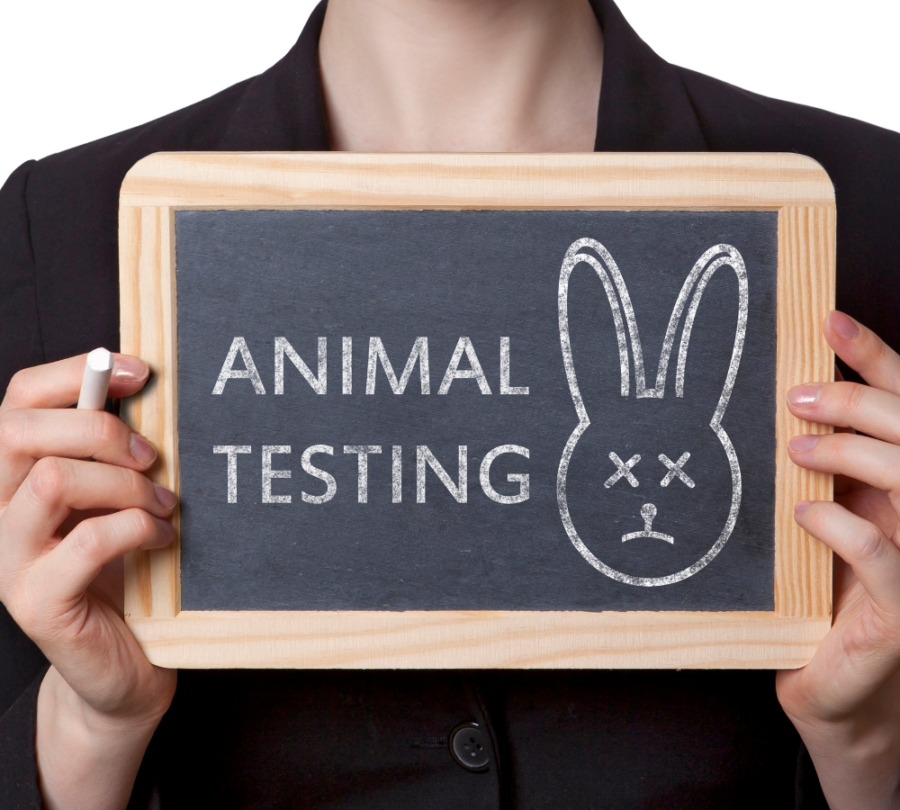The concept of animal testing has existed since third century BCE (before common era). Animal testing describes the process in which organizations will test various products, such as chemicals used in the making of products or new medicines, cosmetics, and more, on trapped animals. A law known as the Animal Welfare Act, or the AWA, invented new regulations in order to limit the cruel acts of these tests. These laws, while helpful in some ways, do not cover all the grounds they need to.
When thinking of animal testing, most people immediately think of makeup. While those products most commonly use animal testing, most everyday items are also tested on animals. Cleaning brands, such as Lysol, Clorox and Dawn, test on animals, detergent brands, such as Bounce and Gain, hygiene brands, such as Irish Springs, Aussie, Herbal Essence and Colgate, face cleaning products, such as Clean & Clear, Aquaphor, Aveeno, and Garnier, even name brands, such as Micheal Kors, Gucci and Versace test on animals. Most commonly, beauty brands, such as Maybelline, Mac, NYC, Chapstick and EOS, test on animals in factories.
Every year, over 100 million animals experience various burns, cripplement, poison and abuse through testing. The AWA does not prevent animal testing in factories and do not require an alternative to animals for testing, so while it may seem to create protections and safety for tested animals it actually leaves various loopholes for animal testers to get away with animal abuse acts. The conditions of experimental labs should not be subjected to any animal. All procedures and tests happen indoors so the animals never see sunlight as needed for them, the animals experience confinement in individual small minimal movement cages, and the animals forced into solitude never get a chance to develop the social life they need in order to thrive. In these inhumane, unnecessary tests, the majority of the animals die. Of the millions of animals tested, only three percent will survive the testing process, while the rest go through brutal procedures that will cause their death. Some people may know animal testing as a simple needle that goes into the testing animals to see any reactions or symptoms, in reality, scienstists inflict various horrific treatments onto the animals. The tested animals may experience one or many of these: force feeding, radiation, surgery to needlessly remove organs, toxic gas, forced anxiety or depression, all for the very slim chance of improving a product or medicine that will more than likely not have approval from the FDA and will not go to humans.
While these tests could show benefits in multiple areas of production and medicine, the horror and abuse of these animals overshadows these improvements or benefits. Most tests do not make it to the market for sale and when certain tests may pass for the animals, there is still a significant chance that it will not work on humans, making their suffering pointless. Since revolutionary discoveries in science, various ways to avoid testing on animals and still prove effective exist, such as in vitro where product tests occur in tubes. The use of human tissue could serve the same purpose as animals in the testing of various items. The tissue would voluntarily be donated to research and used in various tests like the case of animals but in a voluntary and significantly more humane way.
Many brands now label if they are animal testing free. People can show their support against the acts of these factories by trying their best to live a cruelty free life and showing awareness of the products they buy at the store. Instead of using the normal Lysol brand for cleaning or Gain for laundry, try Mrs. Meyer’s products. Instead of the daily Chapstick product or Colgate toothpaste, try the Burt’s Bees brand.


